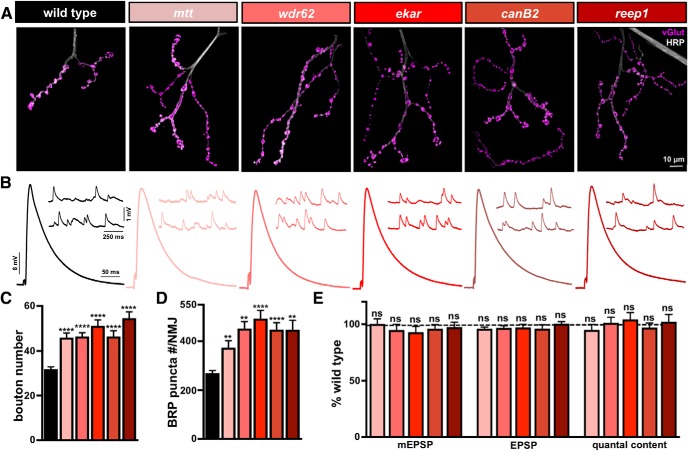Figure 7.
Mutants with enhanced synaptic growth exhibit a concomitant increase in active zone number yet stable levels of synaptic strength. A, Representative images of muscle 4 NMJs in WT, mangetout (mtt: mtt1/mttDf(2R)H3D3), WD repeat domain 62 (wdr62: wdr621/wdr62Df(2L)Exel8005), eye-enriched kainate receptor (ekar: ekar 1), calcineurin B2 (canB2: canB21/canB2Df(2R)BSC265), and receptor expression enhancing protein (reep1: reep1/reep1Df(2R)WI345) mutants immunostained with anti-HRP and anti-vGlut. B, Representative EPSP and mEPSP traces showing no significant changes in the overgrowth mutants compared with WT. Quantification of bouton numbers (C) and BRP puncta number per NMJ (D) in the indicated genotypes reveals a significant increase in both parameters compared with WT. E, Quantification of mEPSP, EPSP, and quantal content values in the indicated genotypes normalized as a percentage of WT. Despite enhanced bouton and active zone number per NMJ in the overgrowth mutants, no significant change in presynaptic neurotransmitter release (quantal content) is observed. Error bars indicate ± SEM. One-way ANOVA test was performed, followed by a Tukey's multiple-comparison test: **p ≤ 0.01; ****p ≤ 0.0001. ns, Not significant (p > 0.05). Detailed statistical information (mean values, SEM, n, p) is shown in Table 4-1.

